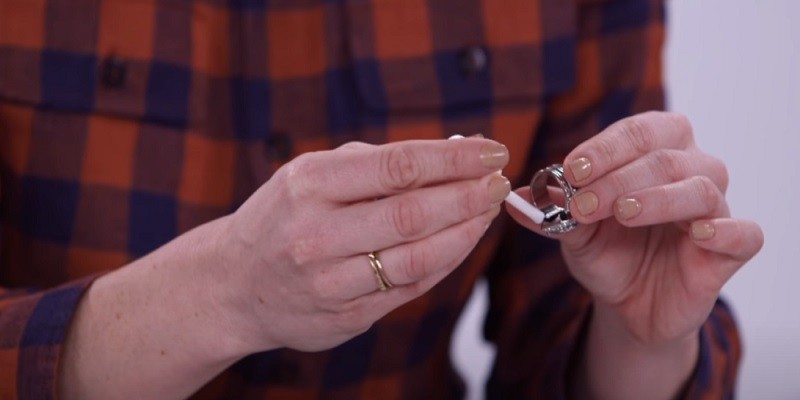Does Copper Turn Your Skin Green?

Last Updated on June 18, 2025 by Jaclyn A. Neeley
Copper jewelry is popular for its aesthetic appeal and purported health benefits. However, many wearers notice a green discoloration on their skin after wearing copper jewelry. This phenomenon raises questions about its causes, safety, and prevention. This article delves into why copper turns your skin green, whether it is harmful, and how to prevent it.
Why Does Copper Turn Your Skin Green?
The green discoloration on the skin from copper jewelry is primarily due to a chemical reaction between the metal and the skin. When copper comes into contact with sweat, oils, and other substances on the skin, it undergoes oxidation. This process forms copper chelates, which are compounds that can be absorbed by the skin, leading to the green tint.
Oxidation Process
Copper reacts with oxygen in the air and the acids in sweat, forming copper carbonate, which is green. This reaction is similar to the patina that forms on the Statue of Liberty, which is also made of copper. The green layer is essentially a protective coating that forms as the copper oxidizes.
Factors Influencing the Reaction
Several factors can influence how quickly and intensely copper jewelry turns your skin green:
- Skin pH: Individuals with more acidic skin (lower pH) are more likely to experience this reaction. The acidity accelerates the oxidation process.
- Sweat and Moisture: Increased sweating, especially in hot and humid conditions, can speed up the oxidation process. This is why the green discoloration is more common in summer or during physical activities.
- Beauty Products: Lotions, soaps, and other skincare products can react with copper, enhancing the oxidation process and leading to green stains.
Is Green Skin from Copper Harmful?
The green discoloration from copper jewelry is not harmful. It is a natural reaction and does not indicate any toxicity or allergic reaction. In fact, copper is an essential trace element for the human body, and the skin only absorbs as much as it needs.
Health Benefits of Copper Jewelry
Copper jewelry is believed to offer several health benefits, including:
- Anti-inflammatory Properties: Copper is known for its anti-inflammatory properties, which can help alleviate symptoms of arthritis and joint pain.
- Antimicrobial Effects: Copper has antimicrobial and antifungal properties, making it beneficial for preventing infections.
- Nutrient Absorption: Wearing copper jewelry can help the body absorb small amounts of copper, which is necessary for various bodily functions, including the formation of red blood cells and maintaining healthy bones and nerves.
How to Prevent Copper Jewelry from Turning Your Skin Green
While the green discoloration is harmless, it can be aesthetically displeasing. Here are several methods to prevent copper jewelry from turning your skin green:
Regular Cleaning
Regularly cleaning copper jewelry can help prevent oxidation. Use naturally acidic ingredients like lemon juice, vinegar, or ketchup to remove tarnish. For example, you can clean copper jewelry by rubbing it with a mixture of lemon juice and salt or soaking it in a solution of lemon juice and baking soda.
Clear Nail Polish
Applying a thin coat of clear nail polish to the parts of the jewelry that come into contact with your skin can create a barrier, preventing the metal from reacting with your skin. This method requires periodic reapplication as the polish wears off.
Avoid Moisture
Keep your copper jewelry dry by removing it before activities that cause sweating, such as exercising or swimming. Also, avoid wearing copper jewelry in humid conditions or while applying lotions and other skincare products.
Rhodium Plating
Rhodium plating can provide a protective layer over copper jewelry, preventing it from coming into direct contact with the skin. This method not only prevents green discoloration but also enhances the durability and appearance of the jewelry.
Proper Storage
Store copper jewelry in a dry, cool place, preferably in an airtight bag, to minimize exposure to air and moisture, which can accelerate oxidation.
Conclusion
Copper jewelry can turn your skin green due to a natural oxidation process when the metal reacts with sweat, oils, and other substances on the skin. This reaction is harmless and can be managed with regular cleaning, applying clear nail polish, avoiding moisture, and proper storage. Despite the green discoloration, copper jewelry offers several health benefits, making it a popular choice for many. By understanding the causes and prevention methods, you can continue to enjoy the beauty and benefits of copper jewelry without the unwanted green tint.
FAQs
Is it bad if copper turns your skin green?
No, it is not bad if copper turns your skin green. The green discoloration is a result of a natural oxidation reaction between copper and elements like sweat, lotion, or air. This reaction forms copper chelates, which are not harmful and can be washed off with soap and water.
Is copper jewelry safe to wear?
Yes, copper jewelry is safe to wear. Copper is an antimicrobial and antifungal metal, and the green discoloration it causes is not harmful. Many people wear copper jewelry for its purported health benefits, such as alleviating arthritis pain and improving circulation.
How to make copper not turn your skin green?
To prevent copper from turning your skin green, you can apply a clear coat of nail polish or rhodium plating to create a barrier between the metal and your skin. Additionally, keeping the jewelry clean and dry, and avoiding wearing it during activities that cause sweating, can help reduce discoloration.
What is the chemical reaction that causes copper to turn skin green?
The chemical reaction that causes copper to turn skin green is oxidation. When copper reacts with oxygen, sweat, or other chemicals, it forms copper oxide and copper chelates. These compounds create a green patina on the metal, which can transfer to the skin.
How to prevent copper jewelry from turning skin green?
To prevent copper jewelry from turning skin green, you can coat the jewelry with clear nail polish, rhodium plating, or Renaissance Wax. Regularly cleaning the jewelry and storing it in a dry, airtight container can also help. Avoid wearing copper jewelry during activities that cause sweating or exposure to water and chemicals.






